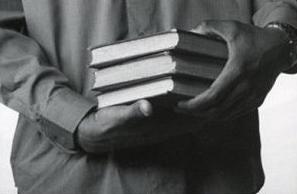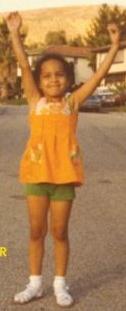 Angela Davis, the black revolutionary, grew up in the American South in the 1940s and 1950s, in the days of Jim Crow, in black middle-class Birmingham, Alabama.
Angela Davis, the black revolutionary, grew up in the American South in the 1940s and 1950s, in the days of Jim Crow, in black middle-class Birmingham, Alabama.
Her parents were teachers. They were highly educated compared to most blacks of the time – and most whites too. Her father saved his money and later went into business, buying his own service station. Her parents owned their own house.
Growing up she never went without a meal. She had dance and piano lessons. She never knew poverty. She thought all blacks lived that way. At school she was shocked to see that many black children ate nothing for lunch because they were too poor.
But even though she was not poor, she was still black:
- She had to go to an all-black school in falling-apart buildings with falling-apart schoolbooks – though they did teach Black history and sang the Black National Anthem!
- She could not go to the library but had to go round back and ask the black librarian for books.
- She could not go to the shoe store but had to go round back and ask the black salesman for help.
- She could not go to the amusement park – that was only for white children.
- She was not allowed in certain hotels and cinemas: they were just for white people.
- Even though she was middle-class she was still at the mercy of the police.
She dreamed of getting into the amusement park by wearing a white mask.
One day she and her sister went to the shoe store and walked right through the front door like they were white. They got away with it because they acted like they were foreigners. The white salesmen were falling over each other being nice to them. They were no longer “niggers”. Then they spoke in perfect English and left!
She loved books and was not much good at piano or dance – or the round of black middle-class parties.
One time she was caught in the rain and the other girls found out she had “good hair”. She ran home and cried.
Her house was on Center Street. Across the street everyone was white. It was called Dynamite Hill because whenever a black family tried to move across the street their house was blown up.
She and her friends would sometimes yell “cracker” and “peckerwood” as white people passed by in their cars. It was the only way they had to defend their dignity.
Her high school in Birmingham was said to be the largest black high school in the world. It was certainly the only one in hundreds of miles. It had grass in front only on postcards. And it was violent: fights often broke out, sometimes with knives: all the hatred from white people being turned on each other.
In 1959 at age 15 she left Birmingham for New York: she won a scholarship to study at a private high school there. Eleven years later she became one of the FBI’s Ten Most Wanted.
See also:
- Angela Davis
- Jim Crow
- black middle-class in America
- Condoleezza Rice – who grew up in the same city, race and class but ten years later
- Obama growing up in Hawaii




